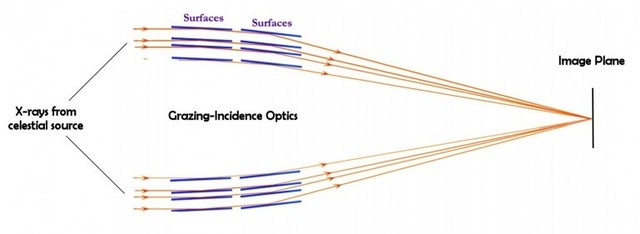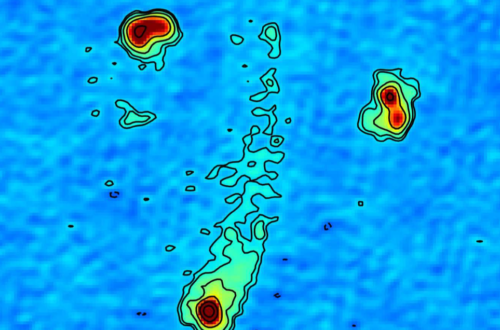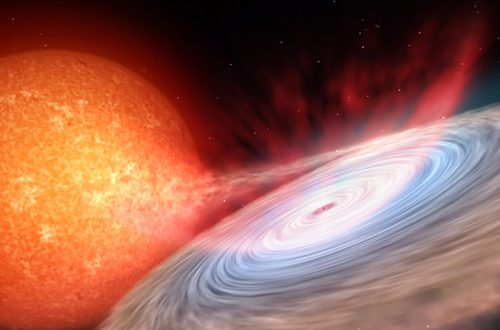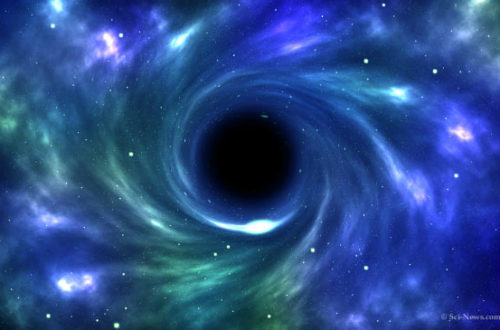For this blog I thought I would talk a bit about my favourite telescope (yes, I have one of those…).
As Dimitris talked about last week, detecting high-energy radiation can be complicated. X-rays for example are blocked by the atmosphere, so if you want to look at astronomical sources emitting X-rays you need to put a satellite in orbit. Beyond that, building the proper optics for detecting X-rays in the first place is very complicated.
What makes observing X-rays so much trickier than, for example, the visible light that our eye is sensitive to, is how much energy each X-ray carries. Being so energetic means that if you were to try to use regular optics, say a bunch of mirrors, to focus the light and actually take a picture, you would fail miserably: instead of always being reflect off a mirror like visible light, an X-ray would go right through it (this is also why they are used for scanning the human body – they can easily go right through skin!). The only way to focus X-rays into an image is to use something called grazing incidence optics: instead of having the light running head-on into the mirror and then being reflected, you have send it towards the mirror at a very shallow angle:

In this case, even an X-ray does bounce off the mirror and can go to the image plane where it will be focused, resulting in a nice clean image (in theory). This is how most modern X-ray observatories work.
What really makes Chandra so special is the quality of its optics. Grazing incidence mirrors tend to be far less accurate than a typical telescope like, say, Hubble, and as a result X-ray images can look like, well, just a blob. For example, this is an image taken by the NuSTAR X-ray telescope that I’m currently working with for my next paper:

The galaxy I’m looking at is the bright yellow blob at the bottom right. It doesn’t look particularly great, especially when you compare it to a Hubble image of the same object:

With Hubble you can really see the galaxy and stars (in orange), as well as the jet launched by the black hole in blue. With NuSTAR…not so much…that image doesn’t even show whether there’s a jet there or not. On the other hand, if you look at Chandra images of the same source….

Once again we can separate the galaxy and jet in all their beauty, and if we zoom in onto the jet we can see just as many details in its structure as with Hubble! The ability that Chandra has to resolve details and take very clear pictures of the sources it looks at is unmatched by any current X-ray observatory, and even the next generation of high-energy telescopes that are currently planned won’t be able to match it. Not bad for a 20-year-old satellite!



